Motor vehicles, traffic and driving
Motor vehicles, traffic and driving
Driving licences
Seventy one per cent of survey respondents aged 17+ had a driving licence in 2019, the highest figure since the survey began and an increase from 63% in 1999 and 68% in 2009. The percentage has increased substantially for people aged over 60 in this period. [Table SUM1, Table 1, and Figure 13]
Figure 13: Percentage of adults aged 17+ holding driving licences by age band, 1999-2019
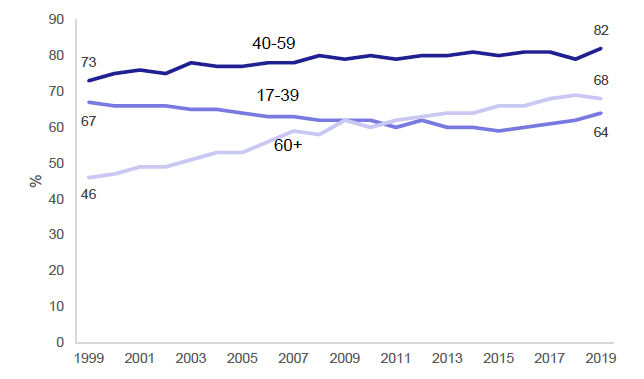
Men were more likely to hold a driving licence than women, with seventy-seven of men aged 17+ having one, compared to 66 per cent of women. Since 1999, when 77% of men and 51% of women held licences, the percentage of men with licences has remained fairly stable and percentage of women has increased. [Table 1 and Figure 14]
Figure 14: Percentage of men and women over the age of 17 with driving licences, 1999-2019
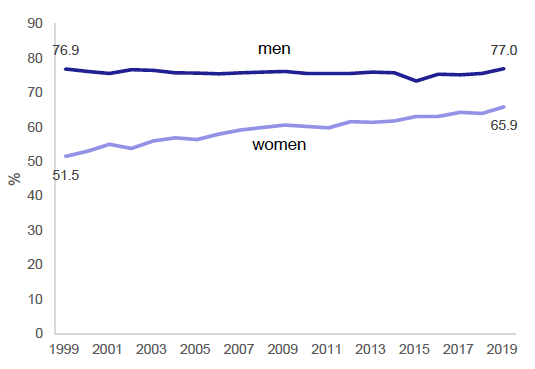
Driving licence possession was lowest amongst the youngest and oldest age groups (17-19: 39% and 80+: 43%) and highest amongst those aged 40-49 and 50-59 (82% and 81% respectively). [Table 1 and Figure 15]
Figure 15: Percentage of people aged over 17 who hold a driving licence by age, 2019
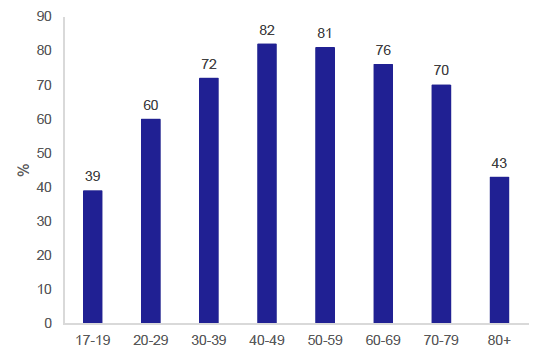
White other British (81%) and White Scottish (72%) people were more likely to hold a driving licence than other ethnic groups. [Table 19 and Figure 16]
Figure 16: Percentage of people aged over 17 who hold a driving licence by ethnic group, 2019
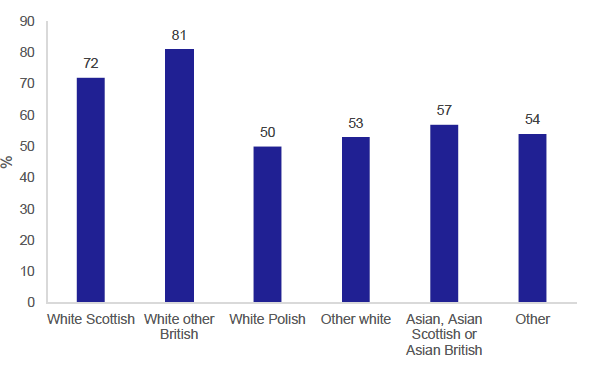
Driving licence possession increased with net annual household income (50% for adults in households with less than £10,000 of income compared to 91% in households with an income over £50,000). [Table 19 and Figure 17]
Figure 17: Percentage of people aged 17+ holding a driving licence by income, 2019
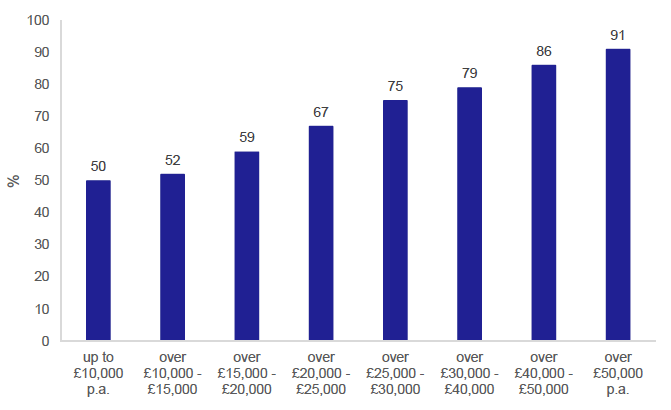
People were more likely to have driving licences in rural areas (63% of adults in large urban areas had a driving licence, compared to 86% of those in accessible rural areas). [Table 19]
Car and van access
Seventy two per cent of households had access to one or more cars or vans for private use in 2018. There has been an upward trend since 1999, when the figure was 63%. Thirty-one per cent of households had access to two or more cars (or vans), up from 18% in 1999. [Table 18, Table SUM1 and Figure 18]
Figure 18: Percentage of households with access to a car, 1999-2019
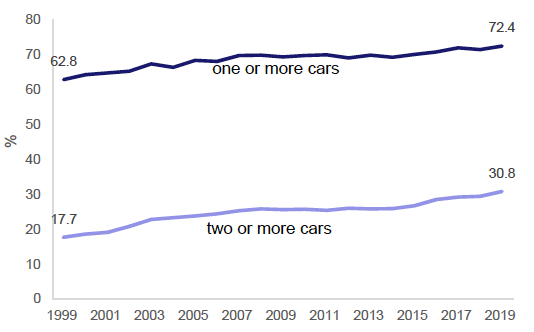
Car access increases with household income, as does the number of cars available per household: forty per cent of households with an annual income up to £10,000 had access to one or more cars, compared to ninety seven per cent of households with an annual income of more than £50,000. The figures for owning two or more cars are eight per cent and seventy one per cent for the lowest and highest income categories. [Table 18 and Figure 19]
Figure 19: Household access to one or more cars by income, 2019
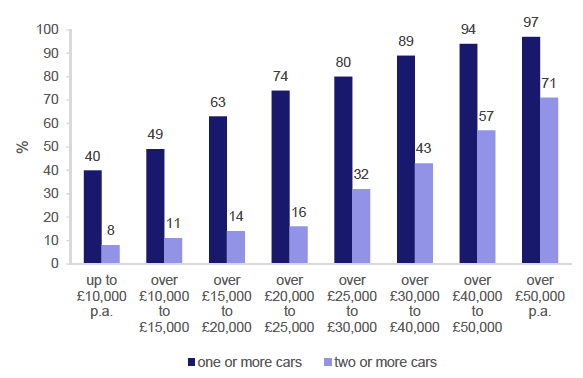
Households in rural areas were more likely to have access to a car than those in urban areas. [Table 18 and Figure 20]
Figure 20: Household access to one or more cars by urban-rural classification, 2019
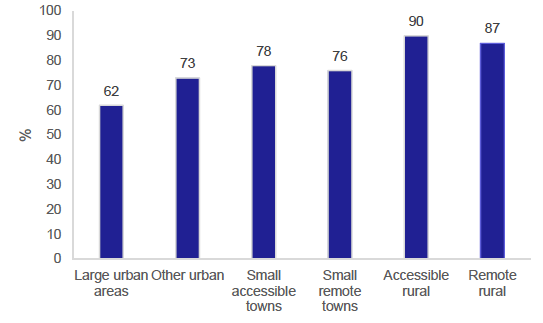
Frequency of driving
Sixty four per cent of those aged 17+ drove at least once a week in 2018, with 43 per cent driving every day. [Tables 20 & SUM1]
Frequency of driving was higher in rural areas than in urban areas, and increased with income. [Table 20]
Car occupancy
In 2019, the proportion of single occupancy stages was just under two thirds (65%) of all car stages. This contrasts with 56 per cent in 1999. The percentage increased to sixty five per cent in 2013, but since then it is little changed. [Table TD9 and Figure 21]
Figure 21: Percentage of cars stages with a single occupant, 1999-2019
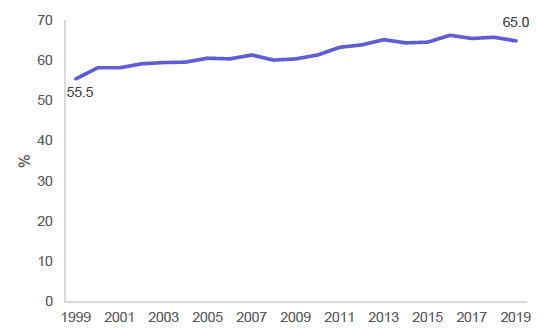
The average occupancy was 1.5 people per car in 2018. [Table TD9]
Fuel spend
The average (mean) amount which households had spent on fuel in the last month was £113 in 2019. When adjusted for general inflation using the Retail Prices Index (RPI), this compares to £115 in 2018, but a fall from a peak of £162 in 2011. In 2003 the inflation adjusted price was £125. [Table 2 and Figure 22]
Figure 22: Expenditure on fuel in the past month (2019 prices), 2003-2006, 2009-2019
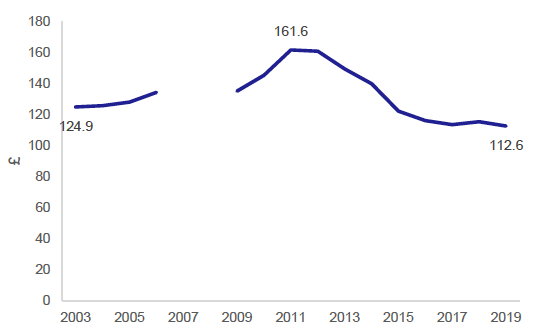
Electric vehicles
The proportion of people saying they owned an electric car or van was similar in 2018 and 2019 (1.8% and 1.6% respectively). The figure has increased since 0.3% in 2016, when the question was first asked. [Table 49 and Figure 23]
Figure 23: Percentage of adults with a driving licence who own an electric car, 2016 to 2019
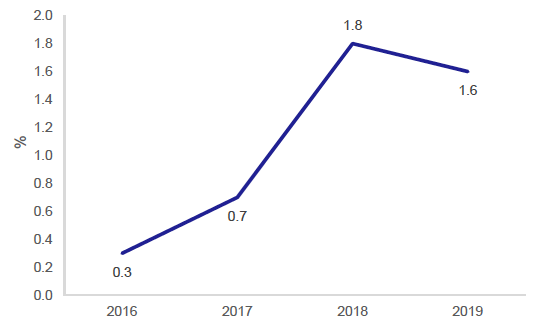
Fifty per cent are either thinking of buying an electric car soon, or would consider doing so in the future. This has risen from thirty seven per cent in 2016 and forty seven percent in 2019. [Table 49]
Of the people who had bought or would consider buying a plug-in electric car or vehicle, the main reasons were their environmentally friendliness (70%) and their fuel or running costs (51%) [Table 50].
For those who said they would not consider buying an electric vehicle, the distance that could be travelled on a single charge (46%) and the availability or convenience of charging points (40%) were the main deterrents. [Table 51]
More detailed statistics on vehicles licensed, the road network, road traffic and reported road vehicles in Scotland can be found in the Road Transport Vehicles Chapter of Scottish Transport Statistics.